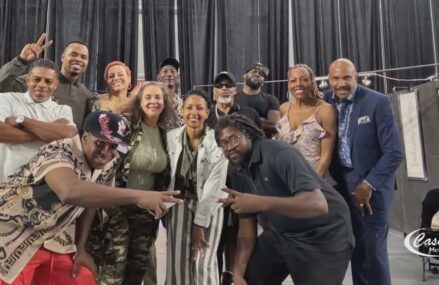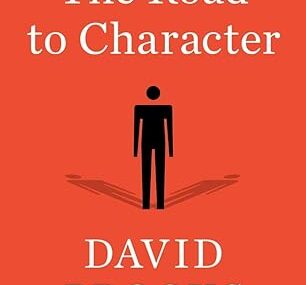1929–35: Early career
As a young teenager, Holiday started singing in nightclubs in Harlem. She took her professional pseudonym from Billie Dove, an actress she admired, and Clarence Holiday, her probable father.[17] At the outset of her career, she spelled her last name “Halliday”, her father’s birth surname, but eventually changed it to “Holiday”, his performing name. The young singer teamed up with a neighbor, tenor saxophone player Kenneth Hollan. They were a team from 1929 to 1931, performing at clubs such as the Grey Dawn, Pod’s and Jerry’s on 133rd Street, and the Brooklyn Elks’ Club.[18][19] Benny Goodman recalled hearing Holiday in 1931 at the Bright Spot. As her reputation grew, she played in many clubs, including Mexico’s and the Alhambra Bar and Grill, where she met Charles Linton, a vocalist who later worked with Chick Webb. It was also during this period that she connected with her father, who was playing in Fletcher Henderson’s band.[20]
Late in 1932, 17-year-old Holiday replaced the singer Monette Moore at Covan’s, a club on West 132nd Street. Producer John Hammond, who loved Moore’s singing and had come to hear her, first heard Holiday there in early 1933.[21] Hammond arranged for Holiday to make her recording debut at age 18, in November 1933, with Benny Goodman. She recorded two songs: “Your Mother’s Son-in-Law” and “Riffin’ the Scotch”, the latter being her first hit. “Son-in-Law” sold 300 copies, and “Riffin’ the Scotch”, released on November 11, sold 5,000 copies. Hammond was impressed by Holiday’s singing style and said of her, “Her singing almost changed my music tastes and my musical life, because she was the first girl singer I’d come across who actually sang like an improvising jazz genius.” Hammond compared Holiday favorably to Armstrong and said she had a good sense of lyric content at her young age.[22]
In 1935, Holiday had a small role as a woman abused by her lover in Duke Ellington’s musical short film Symphony in Black: A Rhapsody of Negro Life. She sang “Saddest Tale” in her scene.[23]By the late 1930s, Holiday had toured with Count Basie and Artie Shaw, scored a string of radio and retail hits with Teddy Wilson, and became an established artist in the recording industry. Her songs “What a Little Moonlight Can Do” and “Easy Living” were imitated by singers across America and were quickly becoming jazz standards.[37] In September 1938, Holiday’s single “I’m Gonna Lock My Heart” ranked sixth as the most-played song that month. Her record label, Vocalion, listed the single as its fourth-best seller for the same month, and it peaked at number 2 on the pop charts, according to Joel Whitburn’s Pop Memories: 1890–1954.[38]
1939: “Strange Fruit” and Commodore Records
Holiday was in the middle of recording for Columbia in the late 1930s when she was introduced to “Strange Fruit”, a song based on a poem about lynching written by Abel Meeropol, a Jewish schoolteacher from the Bronx. Meeropol used the pseudonym “Lewis Allan” for the poem, which was set to music and performed at teachers’ union meetings.[39] It was eventually heard by Barney Josephson, the proprietor of Café Society, an integrated nightclub in Greenwich Village, who introduced it to Holiday. She performed it at the club in 1939,[40] with some trepidation, fearing possible retaliation. She later said that the imagery of the song reminded her of her father’s death and that this played a role in her resistance to performing it.
For her performance of “Strange Fruit” at the Café Society, she had waiters silence the crowd when the song began. During the song’s long introduction, the lights dimmed and all movement had to cease. As Holiday began singing, only a small spotlight illuminated her face. On the final note, all lights went out, and when they came back on, Holiday was gone.[41] Holiday said her father, Clarence Holiday, was denied medical treatment for a fatal lung disorder because of racial prejudice, and that singing “Strange Fruit” reminded her of the incident. “It reminds me of how Pop died, but I have to keep singing it, not only because people ask for it, but because twenty years after Pop died the things that killed him are still happening in the South”, she wrote in her autobiography.[42] When Holiday’s producers at Columbia found the subject matter too sensitive, Milt Gabler agreed to record it for his Commodore Records label on April 20, 1939. “Strange Fruit” remained in her repertoire for 20 years. She recorded it again for Verve. The Commodore release did not get any airplay, but the controversial song sold well, though Gabler attributed that mostly to the record’s other side, “Fine and Mellow”, which was a jukebox hit.[43] “The version I recorded for Commodore”, Holiday said of “Strange Fruit”, “became my biggest-selling record.”[44] “Strange Fruit” was the equivalent of a top-twenty hit in the 1930s.



